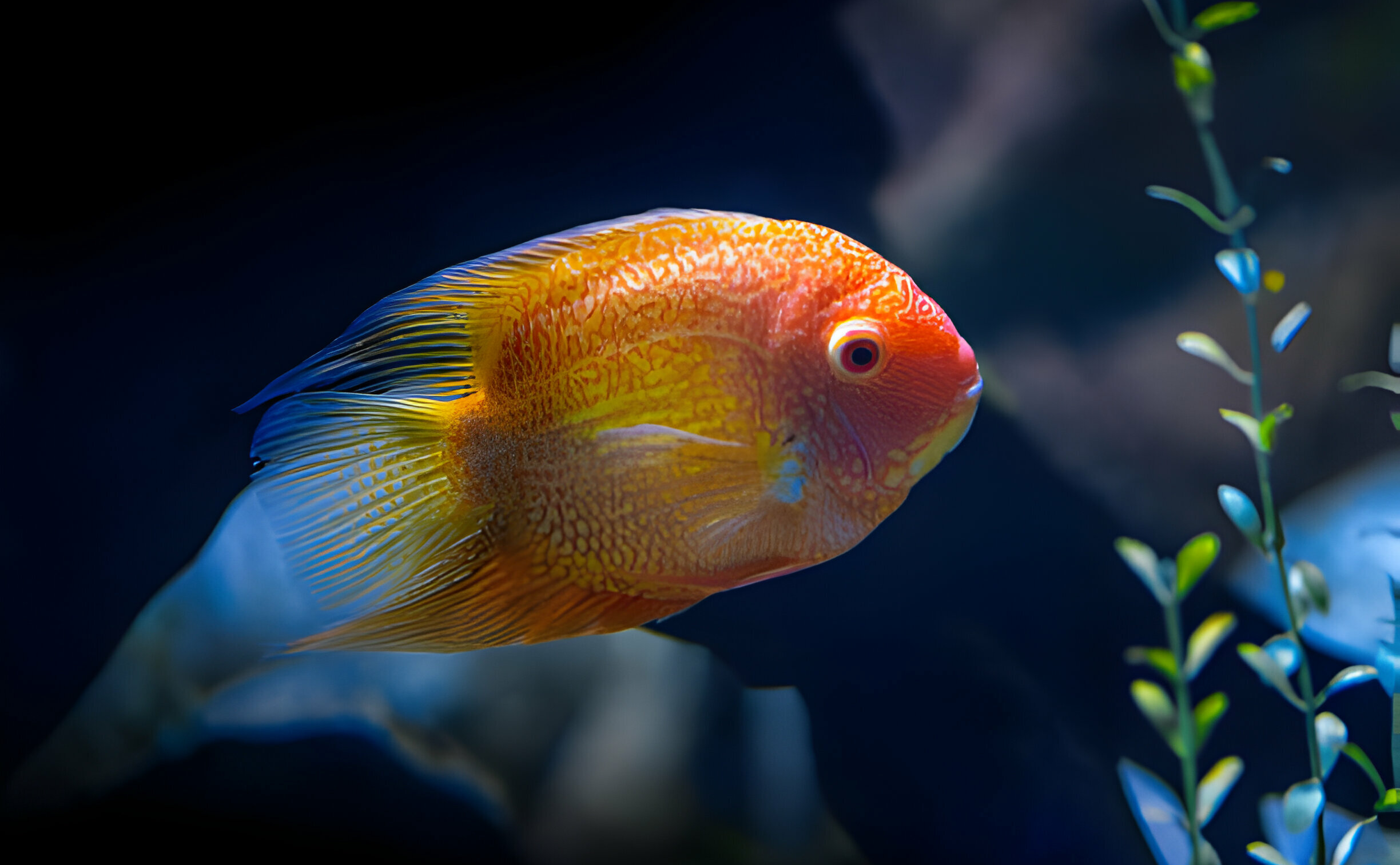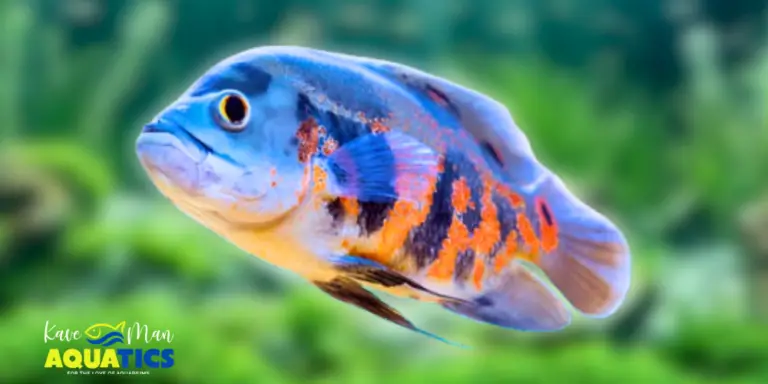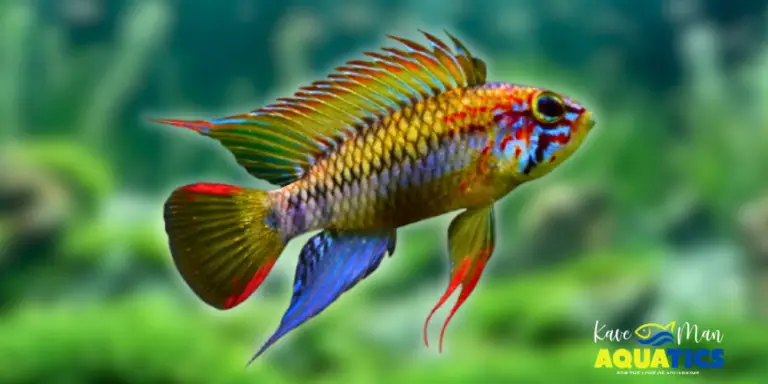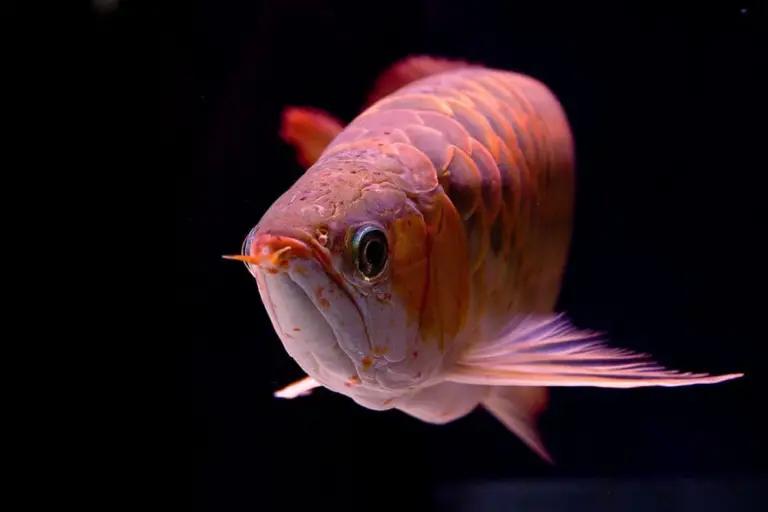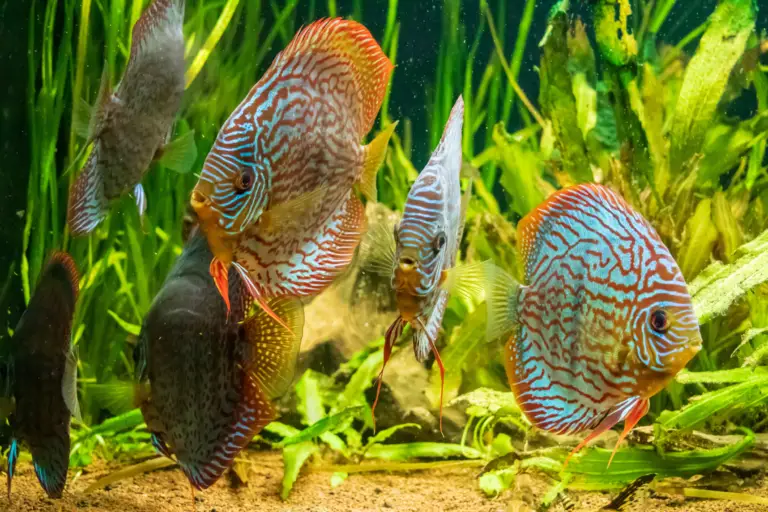Severum Cichlids — Complete Care Guide
Known for their distinctive personalities and striking appearance, Severum cichlids have captured the hearts of aquarists around the globe. Whether you’re a seasoned fish keeper or just starting, understanding the nuances of caring for Severum cichlids is key to ensuring they thrive in your aquarium.
This complete species profile and care guide will cover everything you need to know — from tank requirements and diet to behavior and health tips. Let’s learn how to create the perfect environment for these beautiful creatures.
Severum Cichlid Overview
| Family | Cichlidae |
| Species | Heros severus |
| Common Names | Severum cichlid, Banded cichlid, Hero cichlid |
| Location | South America |
| Size | Typically grows to about 6 – 10 inches (15.24 – 25.4 centimeters) in captivity |
| Life Expectancy | Can live up to 10 – 15 years with proper care |
| Appearance | Disc-shaped body with a slightly pointed head and bright, iridescent scales |
| Color | Varied colorations including gold, green, orange, and red |
| Diet | Omnivorous — both plant matter and small invertebrates |
| Behavior | Generally peaceful but can be territorial, especially during breeding |
| Tank Size | Minimum tank size of 55 gallons (208.2 liters) for a single pair, larger for multiple fish |
| Temperature | 75°F – 82°F (24°C – 28°C) |
| pH | Prefer slightly acidic to neutral water, around 6.5 to 7.5 |
| Water Type | Freshwater |
| Hardness | Soft to moderately hard water, around 5 – 15 dGH (89.3 – 267.9 ppm (parts per million) of total dissolved solids (TDS)) |
| Care Level | Moderate — proper knowledge, attention, and dedication |
| Breeding | Egg-layers — Can be bred in captivity with proper conditions, often exhibit biparental care for their fry |
Distribution and Habitat
Severum Cichlids are endemic to the Amazon River basin and its surrounding tributaries in South America. Within this expansive region, they are mainly found in slow-moving rivers, streams, and flooded areas characterized by dense vegetation and submerged structures like fallen branches and roots.
These habitats provide ample hiding spots and shelter for Severum cichlids, which prefer the security of cover in their environment. Their native habitat often experiences fluctuations in water levels due to seasonal flooding, influencing their natural behaviors and breeding patterns.
Mimicking their natural habitat in your aquarium can help keep them comfortable and stress-free.
Appearance and Colors
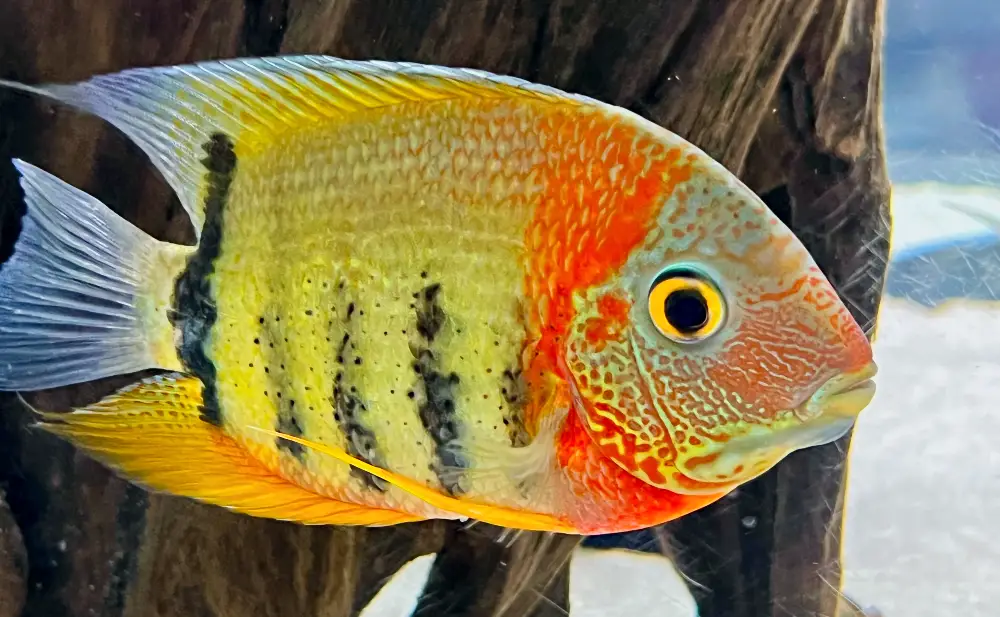
Severum cichlids have a distinctive disc-shaped body and a gently sloping forehead. Their scales come in various colors — ranging from vibrant gold, green, and orange to fiery red hues. These iridescent scales shimmer under aquarium lighting, making them a focal point in any aquarium.
Depending on their mood and environmental conditions, Severums may intensify or dull their colors. Additionally, their dorsal and anal fins can have intricate patterns and fin rays.
Behavior
In their natural habitat, Severums have a range of behaviors that reflect their adaptable nature and complex social dynamics.
While generally considered peaceful — especially compared to other cichlid species — Severums can display territorial aggression, particularly during breeding or when establishing dominance within a community tank.
Despite their territorial tendencies, they are known to form strong pair bonds, often displaying biparental care for their offspring. Severum cichlids are also renowned for their intelligence and curiosity, frequently exploring their surroundings and interacting with tank decor.
Aquarists should provide ample hiding spots and visual barriers to alleviate potential stress and aggression. Understanding their natural behaviors is essential for creating a thriving aquarium ecosystem that promotes their well-being and longevity.
Tank Requirements
Please ensure that before adding any new fish to a tank, it’s properly cycled. That’s where a quarantine tank can be very valuable.
| Tank Size | Minimum tank size of 55 gallons (208.2 liters) for a single pair, larger for multiple fish |
| Temperature | 75°F – 82°F (24°C – 28°C) |
| pH | Prefer slightly acidic to neutral water, around 6.5 to 7.5 |
| Water Type | Freshwater |
| Hardness | Soft to moderately hard water, around 5 – 15 dGH (89.3 – 267.9 ppm (parts per million) of total dissolved solids (TDS)) |
| Substrate | Fine-grained substrates like sand or smooth gravel |
| Filter | Efficient filtration system, preferably canister or powerheads with mechanical and biological media |
| Plants | Hardy species like Java Fern, Anubias, Amazon Sword, and Vallisneria, with floating plants for shade and shelter |
Tank Size
To accommodate the active nature and potential territorial behavior of Severum cichlids, it is recommended to provide a spacious aquarium.
A minimum tank size of 55 gallons (approximately 208 liters) is suitable for a single pair of Severums. However, larger tanks exceeding 75 gallons (284 liters) are preferable for multiple individuals or if other fish species are introduced to the community tank.
The additional space allows for territorial boundaries to be established, reducing aggression and stress among tank inhabitants.
Filtration
A combination of mechanical, biological, and chemical filtration is recommended to remove debris, ammonia, and other harmful substances from the water.
Canister filters or powerheads equipped with biological and mechanical filter media are ideal for larger tanks, ensuring adequate circulation and oxygenation.
Regular maintenance, including filter cleaning and water changes, is essential to prevent the buildup of waste and maintain a healthy aquatic environment.
Temperature
Severum Cichlids thrive in tropical water conditions with stable temperatures ranging from 75°F to 82°F (24°C to 28°C).
Investing in a reliable aquarium heater with adjustable temperature settings is essential for maintaining a consistent temperature within this range.
Sudden fluctuations in temperature can stress the fish and compromise their immune system, making temperature control a critical aspect.
Lighting
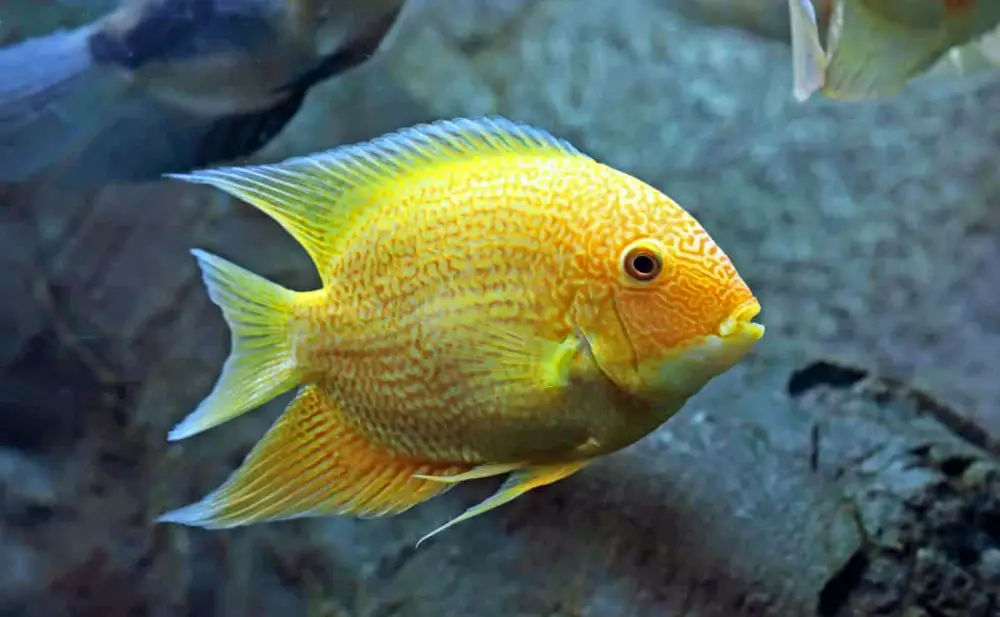
While Severums don’t have specific lighting requirements, providing a natural day-night cycle with moderate lighting is recommended.
LED aquarium lights with adjustable intensity settings can simulate natural sunlight, promoting plant growth and enhancing the fish’s colors. Avoid excessively bright lighting, as it may cause stress to the fish and encourage algae growth.
A photoperiod of 8 to 10 hours of light per day is sufficient to meet the needs of both the fish and any live plants in the aquarium.
pH and Hardness
Severum cichlids prefer slightly acidic to neutral water conditions with a pH range of 6.5 to 7.5. Maintaining stable pH levels is essential for the health and well-being of the fish, as fluctuations can stress the fish and impact their ability to absorb nutrients.
Additionally, Severums thrive in moderately hard water with a general hardness (GH) ranging from 5 to 15 dGH.
Testing water parameters regularly and making necessary adjustments with pH buffers or water conditioners is crucial for creating an optimal environment for them.
Substrate
Choosing the right substrate is important for creating a naturalistic environment that meets the needs of your Severum cichlid.
A fine-grained substrate such as sand or smooth gravel is preferable, as it mimics the soft riverbeds and allows the fish to exhibit their natural digging behavior. Avoid using sharp or abrasive substrates that can injure the fish’s delicate fins or lead to irritation.
Providing a substrate depth of 2 to 3 inches allows Severum cichlids to sift through the substrate in search of food and create nesting sites during breeding.
Plants
Live plants can enhance the aesthetic appeal of an aquarium while providing additional benefits such as oxygenation and water filtration.
However, Severum cichlids may uproot or nibble on delicate plants, so it’s essential to choose species that are hardy and resilient. Java Fern, Anubias, Amazon Sword, and Vallisneria are suitable plant species that can withstand the fish’s browsing behavior.
Planting them securely in the substrate or attaching them to driftwood or rocks can help prevent uprooting.
Additionally, providing floating plants like Water Sprite or Hornwort can offer shade and shelter for the fish while reducing light intensity in the aquarium.
Striking a balance between aesthetics and practicality ensures the coexistence between your Severums and live plants.
Diet and Eating Habits

Severum cichlids are omnivorous by nature, consuming a varied diet that includes both plant matter and protein-rich foods.
In their natural habitat, they feed on a diverse range of prey such as insects, small crustaceans, and aquatic vegetation. In captivity, they readily accept a diet of high-quality commercial pellets or flakes supplemented with live or frozen foods.
Offer a balanced diet consisting of quality pellets or flakes formulated for cichlids, along with occasional treats such as bloodworms, brine shrimp, and chopped vegetables like spinach or zucchini. Additionally, incorporating vegetable-based foods ensures proper nutrition and digestive health for Severums.
Feeding should be done in small, frequent portions to prevent overfeeding and maintain water quality. Observing their feeding behavior and adjusting the diet accordingly helps promote their overall health and vitality.
Tank Mates
While they can be territorial, they generally coexist well with various fish species that share similar water parameters and temperaments.
Peaceful community fish such as tetras, rasboras, and Corydoras catfish make suitable tank mates for Severum, providing activity and color diversity in the aquarium.
Avoid pairing them with overly aggressive or fin-nipping species that may provoke aggression or stress. Additionally, ensure adequate space and hiding spots to reduce competition and establish territorial boundaries.
Introducing tank mates of similar size and temperament gradually can help minimize aggression and promote peaceful coexistence in the aquarium. Regular observation and monitoring of tank dynamics are essential for identifying and addressing any compatibility issues that may arise.
Breeding
Breeding Severum cichlids can be a rewarding experience for aquarists interested in observing their fascinating reproductive behaviors.
To encourage breeding, provide a well-established aquarium with suitable spawning sites such as flat rocks, slate, or clay pots. Severums typically form monogamous pairs and exhibit biparental care for their offspring.
During courtship, the male intensifies his coloration and displays territorial behavior to attract a mate. Once a pair forms, they will select a spawning site and clean it meticulously in preparation for egg deposition.
The female lays adhesive eggs on the chosen substrate, which are then fertilized by the male. Both parents guard the eggs and fry, fanning them to ensure proper oxygenation and removing any debris or unfertilized eggs.
Successful breeding requires stable water conditions, ample hiding spots for fry, and a nutritious diet to support the growth and development of the offspring.
With patience and careful observation, aquarists can witness the remarkable journey of Severum cichlids from spawning to fry rearing.
Check out our massive unboxing of 18 new young Severum cichlids:
Your Severum Cichlid Adventure Begins!
By now, you’ve learned the foundations of keeping these fish thriving in your aquarium. But remember, the journey doesn’t end here. There’s always more to learn and explore.
Take your fish-keeping experience to the next level with Aquabuildr, the brand new comprehensive fish-keeping app. With its intelligent algorithm and customizable features, Aquabuildr empowers you to create and maintain your dream aquarium with ease.
Download the app from the Google Play Store or Apple App Store for FREE!
-
Severum Cichlids — Complete Care Guide
Dive into the world of Severum cichlids! Our complete care guide and species profile have everything you need to raise happy, healthy Severum.

